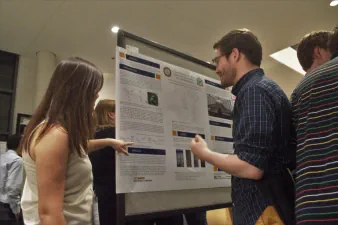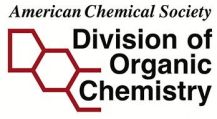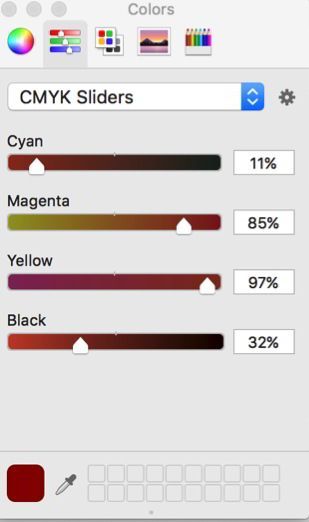Sorry, only members of the Organic Division can access this page.
You can join the Division for only $20.
If you think this message is in error, please contact us
Sorry, only members of the Organic Division can access this page.
You can join the Division for only $20.
If you think this message is in error, please contact us
ACS Organic Division Brand
This page has the Organic Division Logo on it in various formats and it provides a set of rules and guidelines for using the Logo and other items related to publicity of the division.
Rules/Guidelines for use of the Logo
The DOC Logo cannot be used without the express permission of the Division. Persons presenting posters within the Organic Division’s sessions at ACS meetings do not need to acknowledge the division unless financial support was provided by the DOC for travel to the meeting or for the laboratory work (i.e. through the Travel Award or the SURF program).
All Sponsored Symposia must acknowledge the DOC and show the DOC Benefits slide (see below) whenever possible during the session (i.e. at the beginning of the session, intermission, withdraw talks, etc.).
The Logo Files, the DOC Benefits slide, and/or any other resources found on this page shall not be altered in any way including but not limited to adjusting colors, removing words, adding text or graphics to the designs, etc.
DOC Logo Files
DOC Logo Version 1
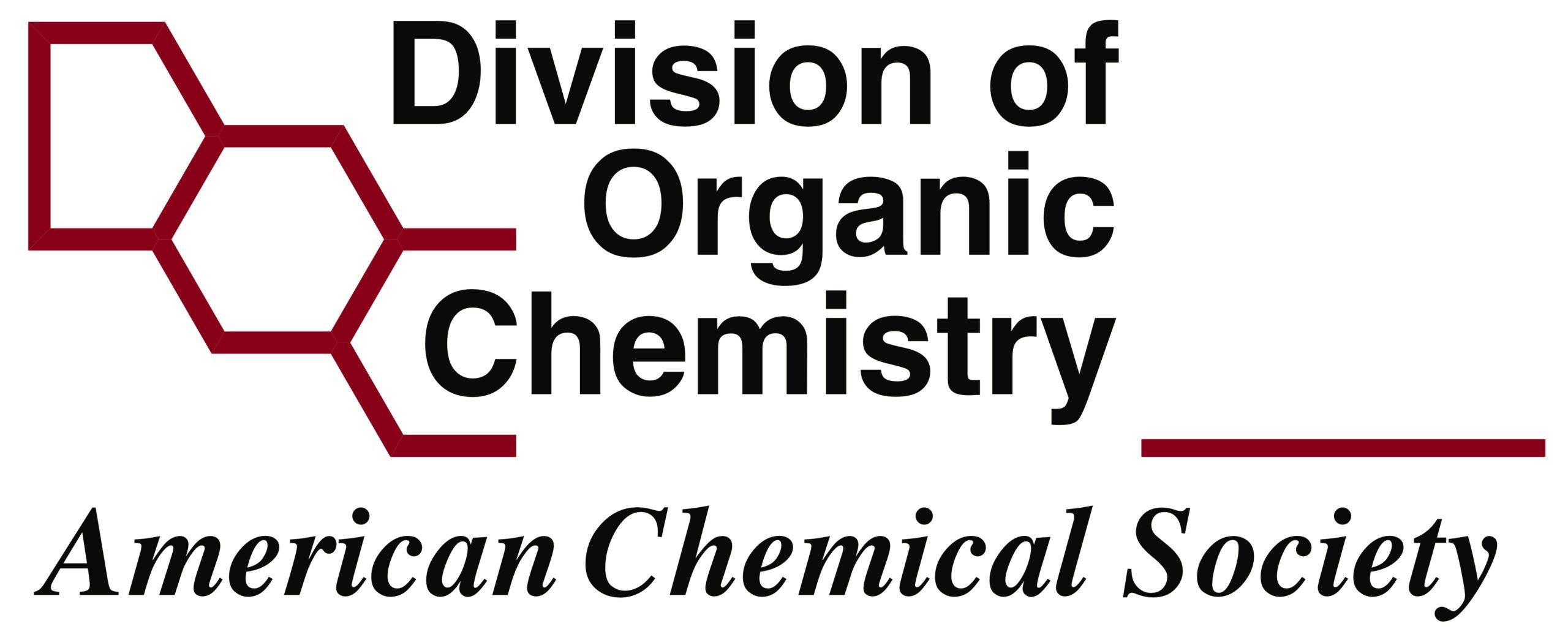
DOC Logo Version 2
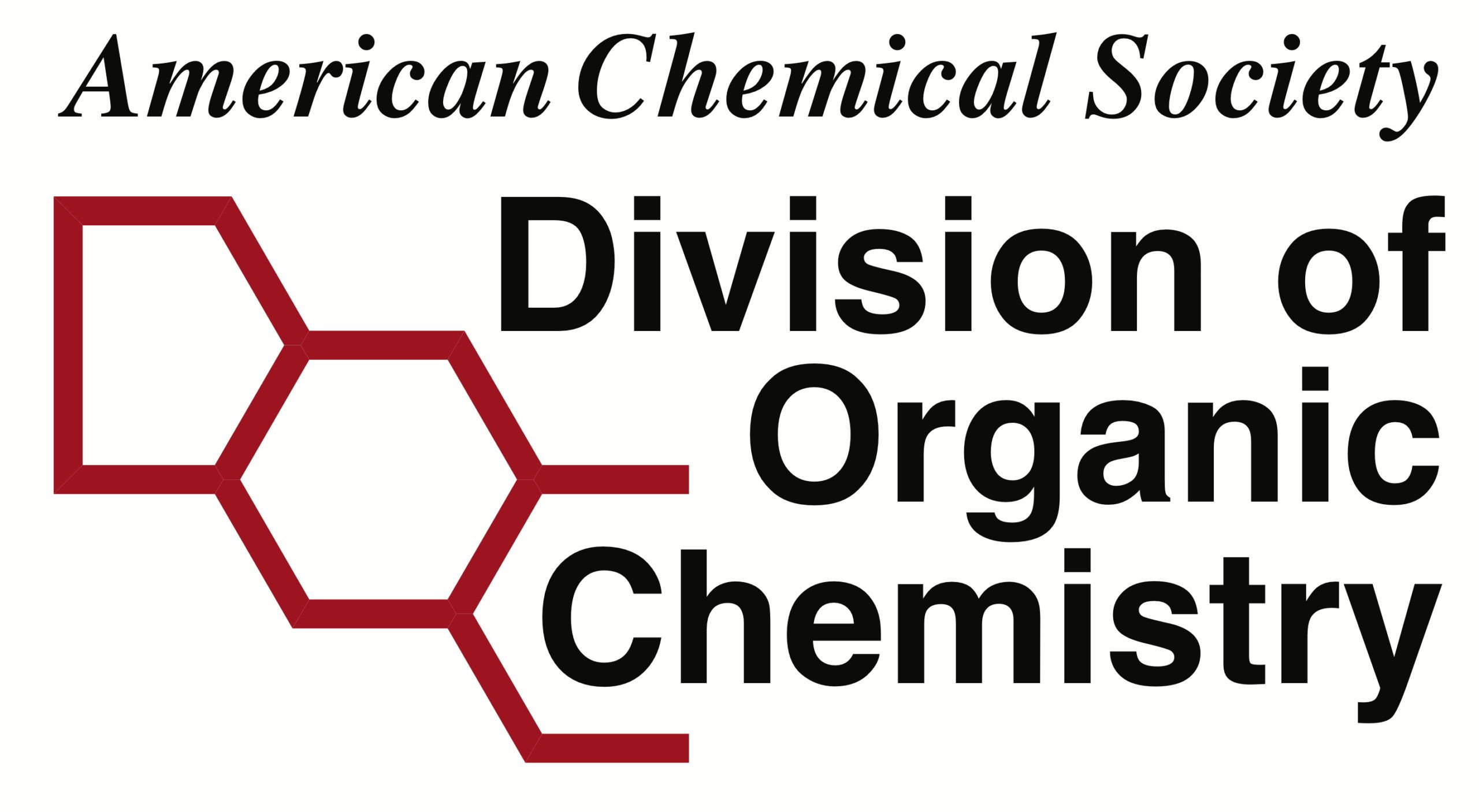
GRS Logo Files
DOC Benefits Slides/Files
Fonts
The Words “Division of Organic Chemistry” on the Logo are in Helvetica Bold
The Words “American Chemical Society” on the Logo are in Times Bold
Sorry, only members of the Organic Division Executive Committee can access this page.
If you think this message is in error, please contact us
Bylaws
*BYLAWS OF THE
DIVISION OF ORGANIC CHEMISTRY
OF THE
AMERICAN CHEMICAL SOCIETY
Bylaw I.
Name and Object
Section 1. The name of this organization shall be the Division of Organic Chemistry, hereinafter referred to as the “Division”, of the AMERICAN CHEMICAL SOCIETY, hereinafter referred to as the “SOCIETY.”
Section 2. The objects of the Division shall be those of the SOCIETY as stated in the Charter and Constitution of the Society. In addition, the objects shall be to foster the advancement of organic chemistry.
Section 3. Nothing in these bylaws shall be inconsistent with the Charter, Constitution, and Bylaws of the SOCIETY.
Bylaw II.
Division Members and Affiliates
Section 1. Membership in this Division is open to all members of the SOCIETY who indicate in writing their wish to join the Division and who pay the annual dues. Application for membership shall be sent to the Secretary of the Division.
Section 2. Members shall have the following privileges:
- Members of the Division shall receive notices of meetings and abstracts of papers presented before the division at the national meetings of the Division.
- All members of the Division may vote. Only voting MEMBERS may hold an elective position.
- Members of the Division shall have the right to make recommendations to the Executive Committee concerning special symposia, speakers, appointment of committees, or any activity whose purpose it is to foster the advancement of organic chemistry that is consistent with these bylaws.
Section 3. Any member may resign from the Division by submitting a resignation, in writing, to the Secretary of the Division during the year for which the member has paid dues.
Section 4.
- The name of any member of the Division who is in arrears in payment of dues by as much as one year shall be stricken from the rolls.
- A member dropped for nonpayment of dues may be reinstated upon payment of current dues.
Section 5.
- A Society Affiliate may apply to the Secretary to become a Society Affiliate of the Division. Provided that dues established for Society Affiliates are paid, as set under provisions of these bylaws, a Society Affiliate shall have the same privileges as do members of the Division except those of voting for or holding an elective position of the Division, of serving as a voting member of its Executive Committee, of voting on Articles of Incorporation and bylaws, or submitting or signing petitions for candidates, recall of elected officials, or bylaw amendments.
- A person who is neither a member nor a Society Affiliate of the SOCIETY, but who wishes to participate in the activities of the Division, may apply to the Secretary to become a Division Affiliate provided that the dues established for Division Affiliates are paid, as set under provisions of these bylaws. A Division Affiliate shall have the same privileges as do members of the Division except those of voting for or holding an elected position of the Division, of serving as a member of its Executive Committee, of voting on Articles of Incorporation and bylaws, or submitting or signing petitions for candidates, recall of elected officials, or bylaw amendments.
- Failure to pay dues in advance shall automatically terminate the Division affiliation.
Bylaw III.
Administration and Organization
Section 1. Officers:
- President, who shall hereinafter be known as Chair
- President-Elect, who shall hereinafter be known as Chair-Elect
- Immediate Past President, who shall hereinafter be known as Immediate Past Chair
- Secretary
- Secretary-Elect
- Treasurer
- Treasurer-Elect
Section 2. At the discretion of the Executive Committee, the offices of Secretary and Treasurer may be held by the same person, who shall be known as Secretary-Treasurer, and the offices of Secretary-Elect and Treasurer-Elect may be held by the same person who shall be known as Secretary-Treasurer-Elect. No individual may hold any other combination of the above offices.
Section 3. The Division shall have a Board of Directors, which shall be known as the Executive Committee. The Executive Committee shall consist of the above-named officers, the Councilors and Alternate Councilors, the Program Chair, the Program Chair-Elect, the Symposium Executive Officer, the Symposium Executive Officer-Elect, and sufficient persons elected by the members of the Division, known as Members-at-Large of the Executive Committee, to make the total number of Executive Committee members not fewer than 20 MEMBERS. The Executive Committee may authorize election of a larger number of Members-at-Large.
Section 4. Duties of Officers and Members of the Executive Committee
The Division officers shall perform the duties listed in these bylaws and the duties required of them by the Constitution and Bylaws of the SOCIETY.
- The Chair shall be the chief executive officer of the Division and shall preside at all business meetings of the Division and all meetings of the Executive Committee. It is the responsibility of the Chair to see that the decisions and recommendations of the Executive Committee are carried into effect.
The Chair shall usually preside at the scientific programs of the Division (regular or special symposia), but may select any qualified member of the Division to serve as the “Presiding Officer” for such scientific sessions.The Chair shall appoint the committees necessary to make nominations for officers, to make special studies, to provide for cooperation with other Divisions, or to foster the advancement of organic chemistry.
- Should the Chair be unable to perform the duties of office, the Chair-Elect shall perform the duties.
- The Immediate Past Chair shall advise the Chair on matters of importance to the Division.
- It shall be the duty of the Secretary to keep a record of the proceedings of the Division and of the Executive Committee; to maintain the list of members and affiliates; to send to members and affiliates such notices as the business of the Division may require; to transmit to the Executive Director of the SOCIETY by December 1 the names of all officers and the standing committees of the Division within ten days after their elections or appointment; in like manner, to notify the Executive Director of the SOCIETY of any changes of officers or standing committees during the year; and to send to each member and affiliate, at least two weeks before national meetings of the SOCIETY, abstracts of papers to be presented before the Division.
The Secretary shall be the custodian of the files of the Division. The Secretary shall render reports to the Executive Committee and to the Division at its annual meeting.
The Secretary shall submit the annual report of the Division to the Council Committee on Divisional Activities, through the Executive Director of the SOCIETY. - The Treasurer of the Division shall attend to the collection of all Division dues from the members and affiliates and have charge of the funds of the Division from which disbursements may be made as authorized by the Executive Committee.
The Treasurer shall prepare and render an annual report to the SOCIETY, the IRS, and other state and local governments as legally required, and to provide these reports, along with a budget, to the Executive Committee. The Treasurer shall provide such other special reports as may be deemed necessary. At the request of the Executive Committee, the Treasurer’s accounts shall be audited by a subcommittee of the Executive Committee that does not include the Chair, Secretary, and Treasurer (or Secretary-Treasurer) or, if approved by the Executive Committee, an independent outside auditor. The audit report shall be submitted for action to the members of the Executive Committee other than the Chair, Secretary, and Treasurer (or Secretary-Treasurer).
The Treasurer shall also serve as chief financial officer in connection with any special symposia held by the Division.
- The Executive Committee shall conduct the business of the Division and direct its activities. As early as possible, the Executive Committee shall, at each national meeting of the SOCIETY, hold a meeting to consider the affairs of the Division and receive reports of its committees. The Executive Committee shall be responsible for all expenditures that the voting majority of the Committee may authorize.
A majority of the members of the Executive Committee shall constitute a quorum for transaction of business.
- The Program Chair shall make arrangements and assume all responsibilities for the organization of the scientific programs of the Division at national meetings of the SOCIETY. If special arrangements will result in additional costs to the Division, the Program Chair shall obtain the prior approval of the Treasurer or Secretary-Treasurer.
- The Program Chair-Elect shall assume the duties of the Program Chair in case of death, disability, or absence of the Program Chair. At the discretion of the Executive Committee, the Program Chair and Program Chair-Elect may share responsibility for the scientific programs of the Division at national meetings of the SOCIETY.
- The Symposium Executive Officer shall make all arrangements for the National Organic Chemistry Symposium, subject to the final approval of the Executive Committee, and shall submit a detailed financial accounting of this Symposium to the Executive Committee. The Symposium Executive Officer shall provide for continuity of this office by accumulating and transferring all pertinent data concerning previous symposia to any duly elected successor.
- The Symposium Executive Officer-Elect shall assume the duties of the Symposium Executive Officer in case of death, disability, or absence of the Symposium Executive Officer.
- Should the Secretary be unable to perform the duties of office, the Secretary-Elect shall perform the duties.
- Should the Treasurer be unable to perform the duties of office, the Treasurer-Elect shall perform the duties.
Section 5. Elections of Officers and members of the Executive Committee:
(1) On or before April 15 the Chair shall appoint a Nominating Committee of three members. This Nominating Committee shall provide the Executive Committee with a slate of candidates that includes the following minimum numbers: for Chair-Elect, two nominees; for Members-at-Large of the Executive Committee, two nominees for each position to be filled. In addition, the Nominating Committee shall obtain from each candidate selected both a short biography and a written statement of the candidate’s willingness to serve if elected. The report of the committee shall be made to the Chair on or before August 15.
(2) Additional eligible candidates for Chair-Elect and for Member-at-Large of the Executive Committee may be placed on the ballot by petition. Such petition must be received by the Secretary by August 1, must be signed by at least 50 members of the Division, and must include a short biography of the candidate and a written statement by the candidate of willingness to serve if elected.
(3)
(ii) Additional eligible candidates for Secretary and Treasurer (or Secretary-Treasurer) may be placed on the ballot by petition. Such petition must be received by the Secretary by August 1, must be signed by at least 50 members of the Division, and must include a short biography of the candidate and a written statement by the candidate of willingness to serve if elected.
(4)
(i) The Executive Committee, at its meeting in the fall of the year prior to when Councilor and Alternate Councilor elections are to be held, shall provide the Secretary the name of two nominees for each of the Councilor positions to be filled and two nominees for each of the Alternate Councilor positions to be filled. At its discretion, the Executive Committee may provide the Secretary with a list of two nominees for each Councilor and Alternate Councilor position for a combined election as specified in elsewhere in these bylaws. The Executive Committee may nominate as Councilor and Alternate Councilor any MEMBERS of the Division who are not already members of the Council. MEMBERS whose terms of office as Councilor or Alternate Councilor are ending would be eligible for nomination for additional terms. It is recommended that the nominees for Councilor or Alternate Councilor shall be selected from the group of present and past Division officers or Members-at-Large of the Executive Committee; however, this is to be regarded as a recommendation and not a rule. The Secretary shall obtain from each candidate nominated for Councilor or Alternate Councilor a short biography and a written statement of the candidate’s willingness to serve if elected.
(ii) Additional eligible candidates for Councilor and for Alternate Councilor may be placed on the ballot by petition. Such petition must be received by the Secretary by August, must be signed by at least 50 members of the Division, and must include a short biography and a written statement of the candidate’s willingness to serve if elected.
(5) Approximately twenty months before the end of the term of the incumbent Program Chair, the Chair shall appoint a subcommittee of the Executive Committee. The subcommittee shall have at least one member who has been a past Secretary or past Program Chair (if such a person is not then a member of the Executive Committee, the member shall be appointed from among the MEMBERS of the Division). At the time of the annual meeting of the SOCIETY that precedes by one year the end of the term of office of the incumbent Program Chair, the subcommittee shall provide the Executive Committee with the name of one candidate for Program Chair-Elect.
b. Election.
(1) The election of officers, Members-at-Large of the Executive Committee, Councilors, and Alternate Councilors shall be by ballot. The time of the election shall be decided by the Secretary; however, the election is to be completed prior to November 15. The results of the ballot shall be determined by a majority of those votes that are cast within forty-five days of the time the ballots are distributed. The Secretary shall count and/or verify the ballots.
(2)
(i) When there are two candidates for Chair-Elect, each voter shall vote for one candidate and that candidate who receives the greater number of votes shall be declared elected.
(ii) When there are three or more candidates for Chair-Elect, a ballot affording a first and second choice shall be used. If one candidate receives a majority of first choices, that person shall be declared elected. If no candidate receives such a majority, the two candidates receiving the highest number of first choices shall be retained, and the remaining candidates shall be eliminated. The second-choice preferences on the ballots so eliminated shall be added to the first-choice totals of the other candidates to establish a majority for one candidate who shall then be declared elected.
(iii) In case of a tie vote, the Executive Committee shall choose the winner from among those tied.
(3) The ballot for Secretary-Elect and Treasurer-Elect (or Secretary-Treasurer-Elect) shall have the instruction to vote for no more than one candidate. Regardless of the number of candidates, the candidate receiving the highest number of votes shall be declared elected. In case of a tie vote, the Executive Committee shall choose the winner from among those tied.
(4) The ballot for Members-at-Large of the Executive Committee shall have the instruction to vote for no more than two (2) candidates, or whatever number of Members-at-Large must be added for the forthcoming year. Regardless of the number of candidates, those two candidates (or the number to be elected if other than two) receiving the highest vote totals shall be declared elected. In case of a tie vote, the Executive Committee shall choose the winner from among those tied.
(5) The ballot for Councilor and the ballot for Alternate Councilor shall have the instruction to vote for no more than the number of Councilor positions and Alternate Councilor positions to be filled. When there are more candidates for Councilor or for Alternate Councilor than the number of positions to be filled, those receiving the highest vote totals shall be declared elected to the available positions. In case of a tie vote, the Executive Committee shall choose the winner from among those tied. The Executive Committee may choose to combine elections for Councilor and Alternate Councilor. The candidate(s) receiving the highest number of votes shall be elected as Councilor(s). The candidate(s) receiving the next highest number of votes shall be elected as Alternate Councilor(s).
(6) The Program Chair-Elect shall be elected by majority vote of the Executive Committee at the annual meeting of the SOCIETY that precedes by one year the end of the term of the incumbent Program Chair.
(7) The Symposium Executive Officer-Elect shall be nominated and elected by majority vote of the Executive Committee at the annual meeting of the SOCIETY that occurs in the year that immediately precedes a National Organic Chemistry Symposium.
Section 6. Term of Office.
- The Chair shall serve for one year, or until his/her successor shall be duly qualified.
- The Chair-Elect shall serve for one year, at the conclusion of which the Chair-Elect assumes the office of Chair, which term shall last for a period of one year, or until his/her successor shall be duly qualified.
- The Immediate Past Chair shall serve for one year after the term of Chair has ended, or until his/her successor shall be duly qualified.
- The Secretary and Treasurer (or Secretary-Treasurer) shall serve for four years, or until his/her successor shall be duly qualified.
- The Secretary-Elect and Treasurer-Elect (or Secretary-Treasurer-Elect) shall serve for one year at the conclusion of which they shall assume the office of Secretary and Treasurer, respectively (or Secretary-Treasurer, if appropriate), which they shall hold for four years. The Secretary-Elect and Treasurer-Elect shall be elected at the annual election that precedes by approximately one year the end of the term of office of the incumbent Secretary and Treasurer.
-
(1) The Members-at-Large of the Executive Committee shall serve for three years and shall be elected in such a manner so as to produce rotation. The Councilors and Alternate Councilors shall serve on the Executive Committee during their terms of office as provided in these bylaws.
(2) The Program Chair shall serve for four years. The Program Chair and the Secretary (or the Secretary-Treasurer) shall be elected in such a manner that their terms of office do not coincide.
(3) The Program Chair-Elect shall serve for one year at the conclusion of which the Program Chair-Elect shall assume the office of Program Chair.
(4) At its discretion, the Executive Committee may modify the terms and duties of the Program Chair and Program Chair-Elect to better deal with the responsibilities of national meeting programming, keeping the combined terms of office at least four years. For example, the Program Chair-Elect could serve for two years concurrently with the Program Chair. At the conclusion of which the Program Chair-Elect would assume the duties of the Program Chair for two years.
(5) The Symposium Executive Officer shall serve until the end of the first Executive Committee meeting that occurs following the National Organic Chemistry Symposium, for which the Symposium Executive Officer is responsible.
(6) The Symposium Executive Officer-Elect shall serve until the end of the first Executive Committee meeting that occurs following the National Organic Chemistry Symposium, at which time the Symposium Executive Officer-Elect will assume the duties of Symposium Executive Officer.
- In the event that election of officers cannot be held because of some national emergency, the above officers and members of the Executive Committee shall continue to serve until an election of officers can be held.
- Except for the emergency specified elsewhere in these bylaws, a MEMBER who has served as Chair, Chair-Elect, Secretary, Secretary-Elect, Treasurer, or Treasurer-Elect may not be again elected to the same office.
- In order that as many MEMBERS as possible shall take part in conducting the affairs of the Division, it is recommended that MEMBERS of the Division who have served on the Executive Committee as elected Members-at-Large should not serve again, unless they are subsequently elected as Chair-Elect, Secretary-Elect, Treasurer-Elect, Symposium Executive Officer-Elect, Councilor, or Alternate Councilor.
- Except as otherwise noted in these bylaws, vacancies for any cause, in any office or in the Executive Committee, shall be filled by the Executive Committee. The MEMBER so elected shall serve until the next regular election of officers and members of the Executive Committee.
- The newly elected officers, Members-at-Large of the Executive Committee, the Program Chair, and the Program Chair-Elect shall assume office on January 1 following their election.
Bylaw IV.
Recall of Elected Officials
Section 1. The elected officials of the Division (officers or elected members of the Executive Committee) are subject to recall for neglect of duties or conduct injurious to the SOCIETY or the Division. Recall procedures are not applicable to Councilors and Alternate Councilors elected by Divisions.
Section 2. The recall of an official shall be initiated when a signed petition, indicating in writing the specific charges and reasonable substantiating evidence, is submitted to the Chair from at least 10 members of the Division. In the event the Chair is the official in question, the Chair-Elect shall receive the petition and shall assume the duties of the Office of Chair with respect to this issue until the issue is resolved.
Section 3. The Chair shall without delay determine that the petitioners are aware of the gravity of their actions and the procedures to be followed. The Chair shall seek an alternate resolution to the problem and a withdrawal of the petition at this time. In the absence of a resolution to the problem, the Chair shall notify the members of the Executive Committee and call a special meeting within thirty days.
- The Executive Committee shall promptly continue the removal process or dismiss the petition as ill-founded or find an alternative solution to the problem. The Chair shall promptly inform the petitioners and the official of the decision of the Executive Committee.
- If the proceedings continue, the Chair shall assign the duties of the official to another MEMBER of the Division until the issue is resolved.
- If the proceedings continue, the official shall be offered an opportunity to answer the allegations in the petition before the Executive Committee.
Every reasonable effort shall be made to contact the official throughout this procedure. That effort shall include a certified letter to the last known address on the official SOCIETY membership rolls. Upon notification, the official shall have thirty days to make a written response to the allegations. The Executive Committee shall decide whether to proceed after studying the official’s response. The Chair shall inform the official and the petitioners of the decision of the Executive Committee.
If no contact with the official can be made after a reasonable effort, the Executive Committee may remove the official in question with a two-thirds (2/3) vote of the remaining members.
- If the proceedings continue, the official in question shall choose one of the following options:
(1) The official may resign.
(2) The official may request a recall vote in the same manner as the original election, which must be consistent with the Division bylaws. The voting membership shall be informed, through brief written statements prepared by the Executive Committee and the official, of the issues involved with the recall vote. Both statements shall be given to the voting membership before the vote is taken.
(3) The official may request a hearing and recall vote by the remaining members of the Executive Committee. A two-thirds (2/3) vote of the remaining members of the Executive Committee shall be required to recall the official.
(4) The official may choose not to respond and thus forfeit the position.
Section 4. The vacancy provisions of the bylaws shall be used to fill a vacancy caused by a recall process. The membership of the Division and the Executive Director of the SOCIETY shall be informed of the results of the recall process and replacement of the official.
Bylaw V.
Councilors
Section 1. The number of Councilors and Alternate Councilors of the Division shall be as prescribed by the Constitution and Bylaws of the SOCIETY.
Section 2. The terms of office of the Councilors and Alternate Councilors shall be of such duration as prescribed by the Constitution and Bylaws of the SOCIETY, and they shall assume office on January 1 following their election.
Section 3. The Councilors and Alternate Councilors shall be nominated under the provisions of these bylaws and elected by ballot of the members of the Division under the provisions of these bylaws.
Section 4. The Councilors and/or Alternate Councilors shall represent the Division in the meetings and business of the Council of the SOCIETY. The Alternate Councilors shall, upon written authorization of the Secretary, substitute at specific meetings of the Council for those regular Councilors who are unable to attend.
Bylaw VI.
Committees
Section 1. The Nominating Committee shall be a standing committee of the Division. The Executive Committee shall establish committees as necessary for the proper operation of the Division.
Section 2. Upon the written request of any 10 members of the Division, special committees shall be appointed by the Chair with the advice of the Executive Committee to study specified problems and to make recommendations. The reports of all such committees to the members and affiliates of the Division may be made at any regular meeting of the Division, or by distribution upon authorization by the Executive Committee.
Bylaw VII.
Dues
Section 1. The exact amount of Division dues for members and Society Affiliates of the Division is to be decided annually by the Executive Committee at its spring meeting. Dues are payable at the same time as those of the SOCIETY.
Section 2. The annual dues of Division Affiliates shall be determined by the Executive Committee in accordance with the Constitution and Bylaws of the SOCIETY. Failure to pay such dues in advance shall terminate the affiliation.
Bylaw VIII. Meetings
Section 1. The Division shall meet at each national meeting of the SOCIETY, unless the Executive Committee votes otherwise, provided that the requirements for a minimum number of meetings as specified in the Bylaws of the SOCIETY shall be met.
Section 2. The business meeting of the Division shall be held at the annual meeting of the SOCIETY. Division business requiring vote of the membership shall be conducted at this meeting or at other times by ballot of Division members.
Section 3. Special meetings of the Division, such as National Organic Symposia, may be called by the Executive Committee if notice is given to the membership in writing or by publication in the official organ of the SOCIETY at least two months in advance.
Section 4. Fifteen members of the Division shall constitute a quorum for the conduct of business. If a ballot is employed, results shall be determined by a majority of those whose votes are received within sixty days of the time of distribution.
Section 5. The fee for registration at any special meeting shall be decided by the Executive Committee in accordance with the Constitution and Bylaws of the SOCIETY.
Section 6. The most recent edition of Robert’s Rules of Order Newly Revised shall be the parliamentary authority for all matters not covered in these bylaws or in the SOCIETY’s documents.
Bylaw IX.
Papers Presented at National Meetings of the SOCIETY
Section 1. The rules for presentation of papers at a national, divisional or other major meeting of the SOCIETY shall be those described in the SOCIETY’s Bylaws.
Section 2. To submit a paper (oral or poster presentation) to the Division for the national meeting of the SOCIETY, an informative abstract of the paper must be submitted by the deadline in the manner determined by the Executive Committee of the Division. Author(s) should attempt to take advantage of the entire space provided for an abstract, including structures and reactions if possible, so that members can know in advance what might be reported. The Program Chair has the authority to reject an abstract that does not provide sufficient information. After the deadline date, no paper can be accepted or modified, and a paper should not be withdrawn.
The Program Chair will normally review all papers submitted for presentation in the Division at national meetings of the SOCIETY. The Program Chair shall appoint a small committee composed of MEMBERS of the Division who can referee doubtful papers without delaying preparation of the final program for the national meeting. In case of disagreement between referees concerning acceptability of a paper, the Executive Committee shall make a decision, with a majority vote of the Executive Committee constituting final action. If the Program Chair is unable to organize the Division program for any national meeting of the SOCIETY held during a year in which the Division has no Program Chair-Elect, the Secretary or Secretary-Treasurer shall assume this responsibility.
Section 3. The Division’s abstracts of papers for the pending national meeting will be distributed and/or made available to the members and affiliates of the Division prior to the meeting.
Bylaw X.
Publications
Section 1. The Executive Committee may, at its discretion, provide for the issue of non-serial publications, including symposium programs and abstracts, for distribution to members and affiliates of the Division, or for sale.
Section 2. All publications of the Division must be in accordance with the Regulations of the SOCIETY.
Bylaw XI.
Amendments
Section 1. These bylaws may be amended by ballot with a three-fifths (3/5) affirmative vote of the ballots received within forty-five days of the distribution date required for passage. Changes in the bylaws suggested by petition and signed by at least 50 members of the Division will, together with changes proposed by the Executive Committee, be submitted to a ballot of the entire membership for adoption or rejection with the next ballot for election of officers.
Section 2. An amendment to these bylaws, after adoption by the Division, shall become effective upon approval by the Committee on Constitution and Bylaws, acting for the Council of the SOCIETY, unless a later date is specified in the amendment.
Bylaw XII.
Dissolution
Upon the dissolution of the Division, any assets of the Division remaining thereafter shall be conveyed to such organization then existent as is dedicated to objects similar to those of the Division and the AMERICAN CHEMICAL SOCIETY, or to the AMERICAN CHEMICAL SOCIETY, so long as whichever organization is selected by the governing body of the Division at the time of dissolution shall be exempt under Section 501(c)(3) of the Internal Revenue Code of 1954 as amended or under such successor provision of the Code as may be in effect at the time of the Division’s dissolution.
*Effective October 24, 2013. Approved, as amended, by the Committee on Constitution and Bylaws, acting for the Council of the American Chemical Society.


